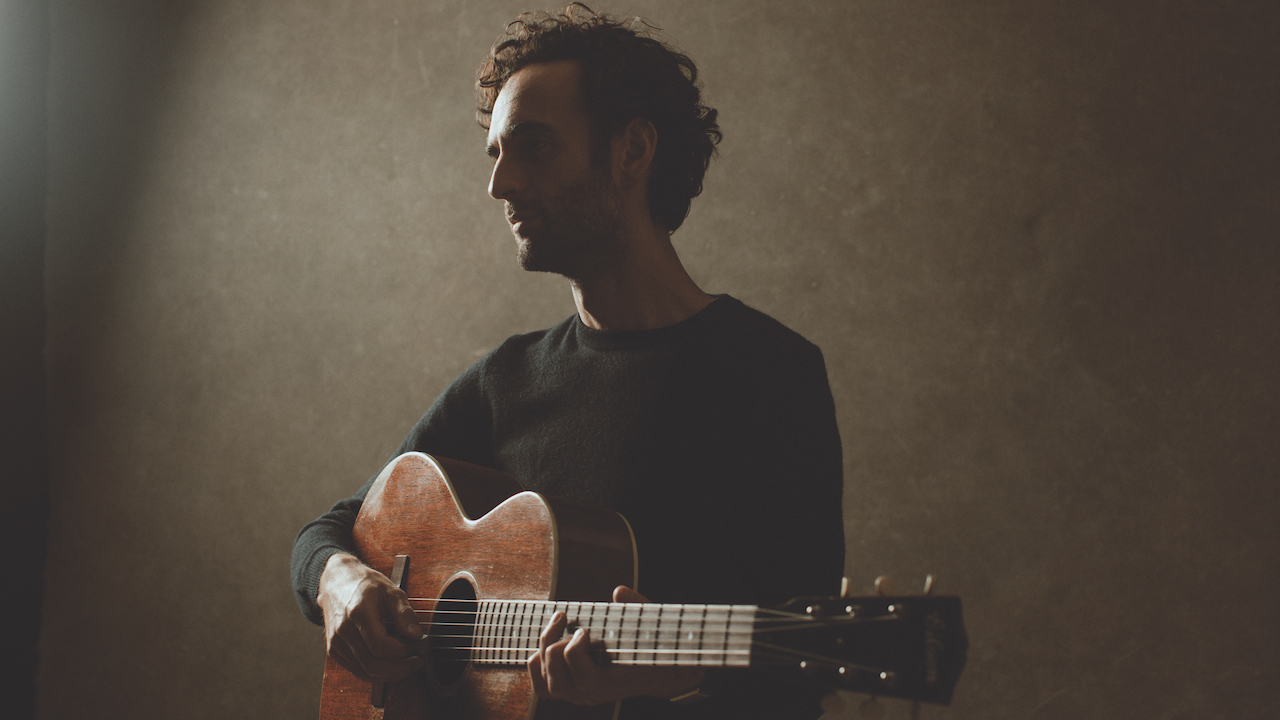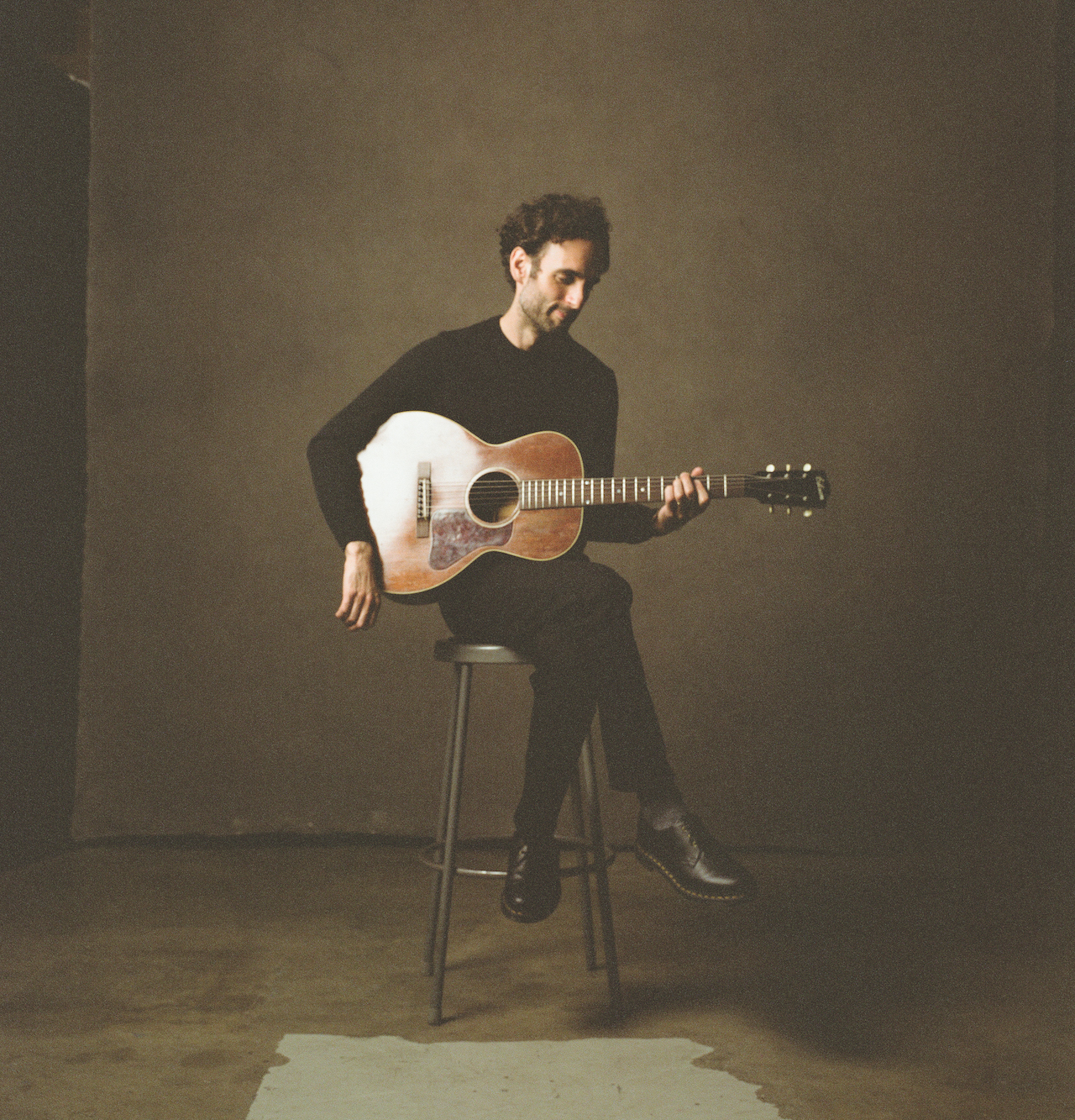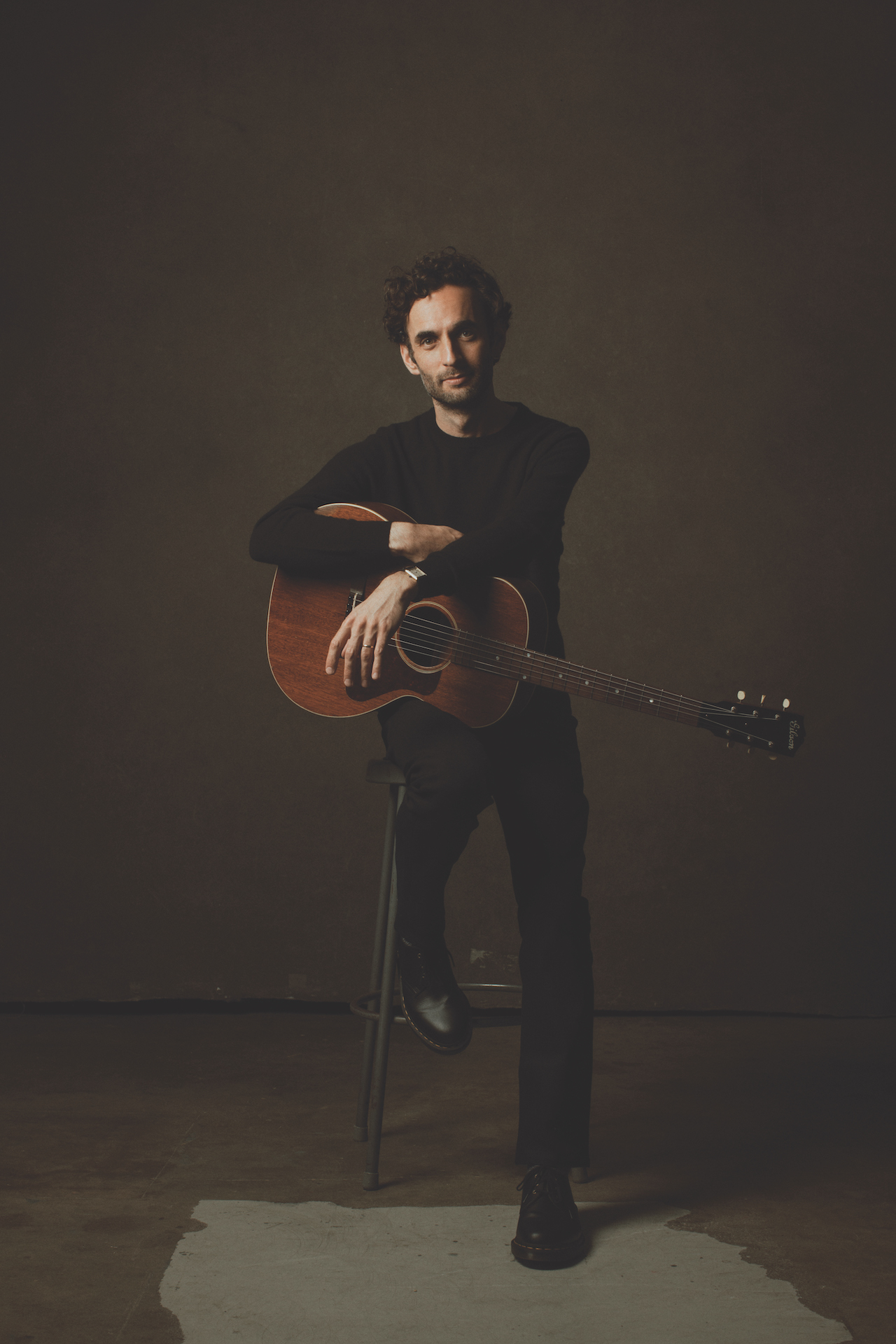“My 1939 Martin was in a garbage bag for 15 years prior to me getting it in pieces. The neck was off and the body was crushed”: How unplugging reshaped Julian Lage's electric approach
The jazz guitar virtuoso reveals how his Collings OM1 JL signature model came to be, and why a solo acoustic show can actually be more “raucous” than an electric-driven affair

At a recent show in San Francisco promoted by Guitar Player Presents, Julian Lage reminded us that he is to be counted among the premiere acoustic guitar players on the planet. That refresher can also be had by listening to his new Blue Note album, Speak to Me.
Although Lage is widely recognized as an electric guitar jazz wunderkind (because that’s been his primary instrument), Speak to Me finds him playing both electric and, mostly, acoustic, delivering a treat we don’t hear from him very often. On it, the guitarist performs unbridled steel-string acoustic in myriad settings, from solo to sextet, and covers every aspect – rhythm and lead, structured and improvised – effortlessly.
Hymnal, the pensive opener, is like a sunrise, while Myself Around You is a stellar solo acoustic excursion that features fabulous pull-off trills and thrilling bursts of creative chord clusters.
Omission features Lage’s unplugged flights of fancy backed by a deep pocket of drums and bass. Other songs, such as Two and One, Vanishing Points, and South Mountain, feature keyboard and woodwind accompaniment that ranges from sparse and peaceful to wild and outside. It all comes together on the tour de force shuffle 76.
Of course, watching Lage perform at SFJazz in San Francisco’s Miner Auditorium before a sell-out crowd was a joy to behold. Equipped solely with his signature Collings steel-string, and completely unencumbered by electronics (or even a guitar strap), Lage sat on a stool before a single microphone.
He almost always uses a pick and doesn’t rely on any tricks, except the sleight of hand that makes you forget there’s no band. A true-blue artist, he paints masterpieces right in front of you, one after another, each as unique as a snowflake. He’s not simply filling in outlines from song sketches, but seems to be drawing from scratch as he considers the appropriate colors for each note of every tune in that moment.
Lage’s virtuosic musicality is utterly compelling in a solo setting, and his skillfulness is technically dazzling, but never flashy. He does none of the demonstrative flailing of a modern percussive fingerstylist. Nor does he strain to entertain with amusing anecdotes in the spirit of his hero Leo Kottke, with whom he toured last year. Neither does Lage need to sing, because his voice on the instrument is so lyrical.
His dynamic range is from full-on forte to so hushed that his groaning is clearly audible as he volleys up and down the fretboard with his fleet fretting fingers, which look almost like claymation figures during his exhaustive runs of perpetual motion. Lage’s steel-string swing is so sweet that a single-note melody sounds complete.
While Lage did release the solo acoustic album World’s Fair in 2015, and has played acoustic on other efforts, he seems to be more in acoustic mode now than at any point since, making this a perfect time to have him elaborate on his unplugged path. We spoke the morning after his performance, which left the players in attendance inspired, humbled, and ultimately impressed.

Looking back at last night, what are your thoughts about the performance?
“Playing solo is a beautiful thing. It has its challenges, it’s very humbling, and I love it so much. Also, playing with one acoustic in such a fine room is sublime. It’s a good volume; I can hear everything great. So the way I feel today is that I want to do it again. Gimme another shot. I want another whack at it! [laughs]”
You bookended the set with material from World’s Fair. What was your main acoustic when you recorded that album?
“I made World’s Fair on a 1939 Martin 000-18. To my understanding, it was basically in a garbage bag about 10 to 15 years prior to me getting it in pieces. The neck was off and the body was crushed. I bought it in that condition, to be pieced back together by the Martin repair guru, TJ Thompson. After he fixes a guitar, it takes on a gorgeous quality – it seems to ring out more and radiate in a different way, and yet it feels very structurally sound.
“He’s famous for this magic trick. A Martin touched by TJ reaches another level of greatness. I developed a relationship with that guitar, and it was a real part of the sound at a certain point. Thinking pragmatically, I wanted to have an alternative guitar that was built upon that Martin’s great qualities, but with some modifications.”
How did it inform the Collings OM1 JL signature model that you play now?
“That coincided with me becoming friends with Bill Collings and his whole team. We discussed making a guitar that had some of the same asymmetrical neck-profile attributes of the old Martin triple-0, but stretched out to the scale length of an OM. The second goal was to make a guitar that breathed as much as an old Martin. That’s an issue of wood density and finish.
“The old Martin that I play is light and fragile, and that’s not always what a modern guitar company wants to build, because then it breaks easier. But Bill Collings was open to considering a guitar that had some idiosyncrasies.
“The neck wasn’t exactly balanced; some notes spoke louder than others. It’s a bit narrower at the nut than a modern OM. It was a cool study. It took a couple years to understand why those attributes are attractive. The next challenge was being able to replicate it over and over. That’s essentially the story of my signature model.”
You make it sound almost classical at times. You mentioned that Agustín Barrios, your favorite composer, was ridiculed for sometimes wearing traditional Paraguayan dress in concert and shunned by the classical guitar community because he used steel strings instead of nylon for the lower four. What makes him the greatest in your opinion?
“Agustín Barrios wrote music for the guitar that was fluorescent. Barrios has a singular storytelling style that is kind of dramatic and whimsical in a certain way that you don’t hear much. I’m obsessed with it. Although I’ve played nylon-string guitars quite a bit in different contexts, it’s not my voice.
Sometimes I feel there is a misinterpretation about classical, jazz and blues, as if these genres are like fairy dust that you sprinkle out
“Steel-string is what I’ve played since I was a kid. You never hear Barrios’ music played on steel-string, since it’s always in the classical guitar repertoire, but many aspects of his compositional style – such as the orchestration, utilization of the low end, and his use of middle voices – sound great on a steel-string guitar. I draw inspiration from the architecture and try to apply certain orchestral things to my playing.
“Sometimes I feel there is a misinterpretation about classical, jazz and blues, as if these genres are like fairy dust that you sprinkle out. I say with great humility that these are disciplines with rich lineages, and I’m not necessarily deeply steeped in these lineages. I play with a flatpick on a steel-string, Martin-style acoustic guitar. So I’ve always had a blurry relationship with appropriating classical techniques.
“The classical aspect of my approach has more to do with the narrative of the program, such as having a set of music that moves from folkloric techniques to more virtuosic, spatial, and spectral, [English free-improvisational guitarist] Derek Bailey kind of stuff. I’m fascinated with surveying all of these areas, and that is more akin to the classical music world, where someone writes a suite or concerto for a certain instrument. But I don’t pretend to know what I’m doing, that’s for sure.”
When you played an etude by Barrios, you mentioned that it was actually the inspiration for what became a full electric combo album, Squint. What’s most interesting about Speak to Me is hearing the acoustic in jazz combo settings.
“It’s a cool domain, and I’m far from the first to do it. The reason I haven’t done it is mostly a volume issue. Acoustic overtones get covered up by cymbals and bass, or even piano and woodwinds. So, ironically, here I am trying to use an acoustic guitar to bring nuance, but because I’m the quietest one in the band, I’m actually the one barking.
“I have to be at my forte all the time because if I go below, I get lost. So I came to this understanding that, if I play electric, I can actually play quieter. I can touch the instrument a lot lighter, let the amp do the work and then actually regain all of the nuance that was gone. That’s why I played electric for so long as the primary instrument.
“A couple factors made it seem like a problem worth investigating again on this album. One, it was a studio record where we could use headphones to construct an ecosystem where it felt like there was room for the acoustic guitar. With the drums in a separate room, I could play as light as I wanted. And having Joe Henry produce was an even larger factor.
“Joe is such a masterful musician and guitar player. He understood what I was dreaming about doing with the acoustic, and when I was tempted to give in and go electric, he would challenge me: ‘Before you do that, try playing it on acoustic.’
“Much to my delight, he was right. I could lead the band with a quiet acoustic guitar because these are the greatest musicians in the world, and they played accordingly.
“It blew up my whole notion that I’ve got to play loud in order to be heard. All of that stuff about the drums and everything else is just not true with the right people. They accommodated me by allowing a space for a very vulnerable acoustic guitar sound. That’s the fun part about this record and this project. It’s fragile, but it’s big. And that’s a cool balance.”

It was interesting at the show how you chose to do a solo version of an electric tune, Northern Shuffle, which takes the blues to everyplace except where one would expect.
“In a lot of ways, solo acoustic guitar is quite intense, because you’re occupying one hundred percent of the soundstage. As you add people, you occupy a smaller percentage. If you’re not careful, you can diffuse it. So, you can have 20 people making a small sound, or you can have one person making a giant sound. And it has a lot to do with context.
“On the record, Northern Shuffle is prototypical electric guitar stuff with a six-person band because it’s meant to have a large impact. But it’s actually very well suited to one instrument because, hopefully, you have the custody of the audience’s ear and can kind of direct the ear where you want it to go.”
Your solo acoustic approach is intriguing compared to guitarists that try to imply a bigger band by playing multiple parts or even multiple necks simultaneously, adding percussive hits and so on.
“One of the things I keep learning about solo guitar is that you don’t have to imply a bigger band. It can be done so masterfully, and I’ve tried that, but it’s the weirdest thing. Since there’s no one else to listen to onstage, you really can point the attention where you want it to go, and it’s like a magic trick. I think it feels bold, and it can feel inviting.
“That said, the notion that you’ve got to trick the ear into hearing a band has been misguided in my case. First, I’m not very good at it. And second, part of the surreal charm of solo guitar is that, if you’re playing a single-note melody line unaccompanied, it’s one hundred percent of the story. When you’re at one hundred percent, you don’t need more. You’re already at capacity. You actually have this rare peek into these nuanced things that you wouldn’t necessarily hear if they’re always supported by something and contextualized in a musical way.

“Ultimately, the whole magic trick is playing with expectations. You can play with space, take a dramatic pause and go in a completely different direction. I think things are kind of more raucous when it’s just one acoustic guitar. It’s like you can’t look away. That’s my experience anyway.”
Are you planning on doing any more solo touring, perhaps with Leo Kottke as you did last year?
“I would love to. We’re plotting. We both want it so badly, and we’re trying to figure out when, how and what. I don’t have any solo tours planned but I have a one-off in Nashville next week supporting the Milk Carton Kids. I jump on every chance I get because I very much want to do it more.”
- Julian Lage's new album, Speak to Me, is available to stream or purchase now.
Get The Pick Newsletter
All the latest guitar news, interviews, lessons, reviews, deals and more, direct to your inbox!
Jimmy Leslie has been Frets editor since 2016. See many Guitar Player- and Frets-related videos on his YouTube channel, and learn about his acoustic/electric rock group at spirithustler.com.
“We’d heard Jimi Hendrix, we'd heard the Who, but now we finally got to see these guys. And watching Jimi Hendrix burn his guitar….” Grace Slick on Hendrix at Monterey, Jefferson Airplane and the Spanish origins of “White Rabbit”
“I’m still playing but I’m covered in blood. Billy’s looking at me like, ‘Yeah! That’s punk rock!'” Steve Stevens on his all-time worst gig with Billy Idol — and the visit to Jimi Hendrix's grave that never happened









